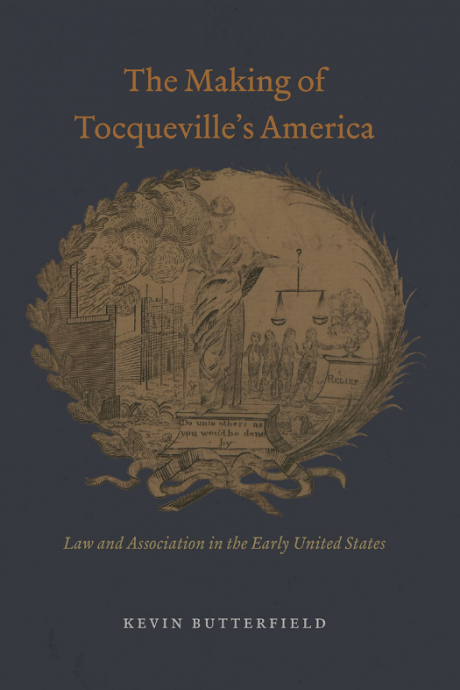In America, officers pursue the common good by maintaining faith with the Constitution’s original meaning. No Dworkinian interpretivism necessary.
A People of the Law
Commenting upon the associative life of Americans in the 1830s, Alexis de Tocqueville observed, “Americans of all ages, of all conditions, of all minds, constantly unite,”[1] associating in pursuit of large and small common aims. The robust associative life that so struck Tocqueville was, in his view, a direct consequence of the democratic social state: Because each democratic citizen feels weak and powerless as one among many disconnected equals, joining together links atomized people together and produces in them the sense of being powerful enough to achieve their own shared ends. Composed of many who only feel their strength collectively, associations not only help citizens achieve the ends for which they united, but the experiences of connection and of collective strength gained via associative life also encourage the habit of turning to each other—rather than to government—to solve problems. Tocqueville believed such habits are essential, if a people is to remain free.
In The Making of Tocqueville’s Democracy: Law and Association in the Early United States, Kevin Butterfield, assistant professor of classics and letters at the University of Oklahoma, focuses on the proliferation of associations in the formative years of the American republic. Butterfield’s concern, however, is slightly different from Tocqueville’s, in that Butterfield is less intrigued by the question of why associations proliferated and how they preserve freedom in a democratic age, and more focused upon how these associations were constituted and functioned in the early American context.
In particular, Butterfield sees early American associative life as highly legalistic. It emerged, he argues, out of the complexities of the American experience of self-government, a collective experience that included both the drafting of constitutions and the navigation of the intricacies of rights and duties as filtered through the federalist system, in which the ordinary citizen was subject to legal obligation—and potentially to encroachment upon his or her freedoms—by authorities at the local, state, and federal levels.
Key to understanding the American experience of associational life, contends Butterfield, is its voluntary aspect and the related notion that associations are formed not by bonds of affection but by the conscious decision, in the author’s words, to “bind oneself on known and definite terms.”
This emphasis on deliberate choice in membership and affiliation was rooted in the early Americans’ experiences with religious pluralism. Not only did genuine choice render the act of membership itself “more meaningful,” but it was in this arena that “the relationship between the state and the group life of civil society was first being worked out,” writes Butterfield. He also observes that these experiences with religious pluralism fostered the development of legal regimes that supported dissenters’ religious choices, thus making “concrete this growing acceptance of the voluntary principle.”
The political experiences of framing constitutional orders for the new nation and of federalist self-government further refined and enlarged the legalistic aspects of associational culture already present in late 18th century America. The first generations of Americans were committed to what Butterfield calls an “everyday constitutionalism” in which formalized and rule-bound interactions characterized shared political and civic engagements; moreover, the associative and civic spheres exerted reciprocal influences, with the methods and habits of one reinforcing and shaping modes of engagements in the other. Together, political and civic life contributed to a general culture of self-government that extended well beyond the political.
Pre-revolutionary legal remedies, practices, and structures—particularly the chartered corporation—were significant elements in the early republic’s associative culture. Charters are particularly important to the story Butterfield tells, for they functioned as quasi-constitutions for a wide variety of non-political entities. Like constitutions, charters’ purposes were two-fold: not only did they articulate the rights and powers of the corporation, but they “were also a way of delineating the rights of corporate members vis-à-vis the corporation itself,” according to Butterfield. (Italics in original.)
Just as the U.S. Constitution articulated what the federal government must and must not do, what was expected from citizens, and what individual rights and freedoms could not be encroached upon (even with the consent of a democratic majority), the various constitutional structures that governed American associational life (charters, bylaws, and similar legal forms) delineated the advantages, duties, and rights of the members of these private associations.
The bulk of the book is devoted to presenting meticulously researched case studies, illustrating the everyday constitutionalism of the first generations of American citizens and buttressing the author’s claim that they were predisposed and committed to carrying the legalistic framework of their political life over into their associational life and to acting “within their own voluntary associations in ways that emphasized procedural fairness, legalistic formalities, and compliance with their own originating documents, which they usually called constitutions.” (Italics in original.)
From well-known bodies such as the Society of the Cincinnati to more obscure ones, like the Social Society of Schenectady or the Mutual Assistance Society of Virginia, Butterfield chronicles how charters and bylaws articulated purposes and protected members, as well as how the courts were often used to enforce procedural regularity and to safeguard members against coercion by the majority within the association itself. These histories are the book’s strength, both because they are fascinating reads that showcase the vibrant communal life that struck visitors like Tocqueville, but also because they drive home a point: threats to individual liberty can come from any organized group, and so constitutional limits and recourse to an independent judiciary are essential bulwarks of freedom.
[1] Alexis de Tocqueville, Democracy in America, edited by Eduardo Nolla, translated by James T. Schleifer (Indianapolis: Liberty Fund, Inc., 2010), p. 896.


